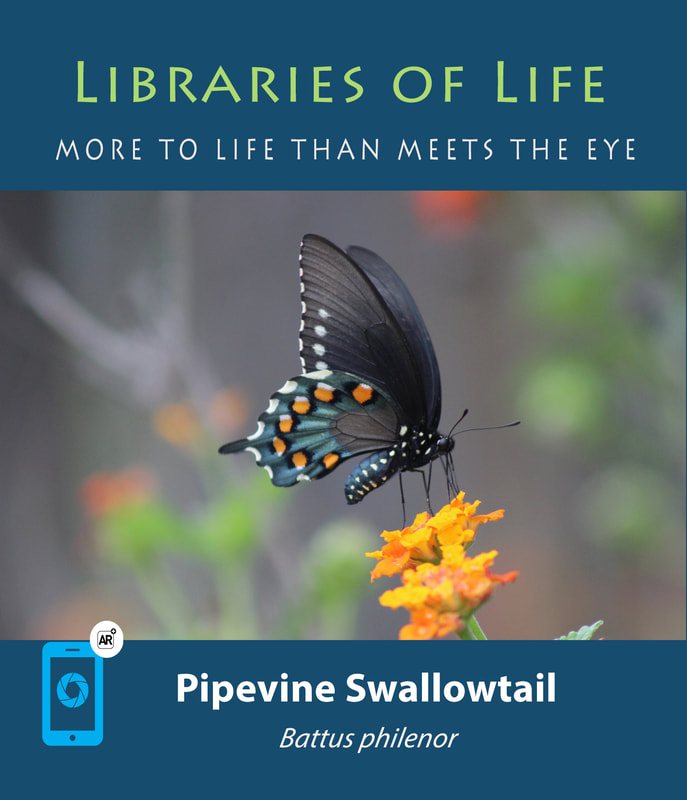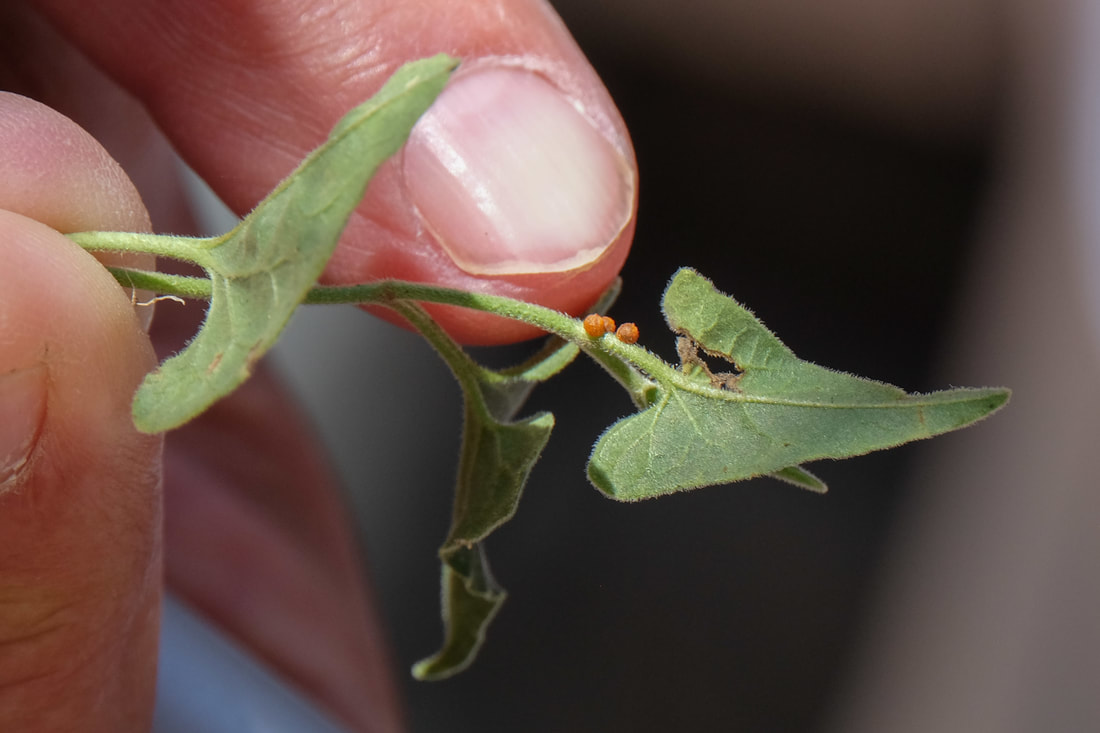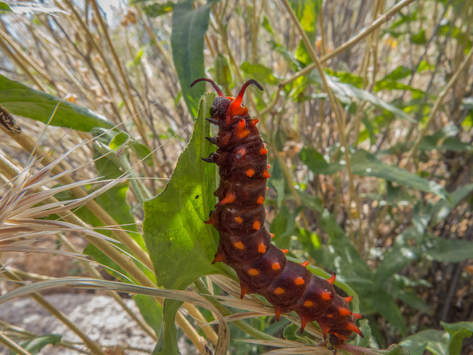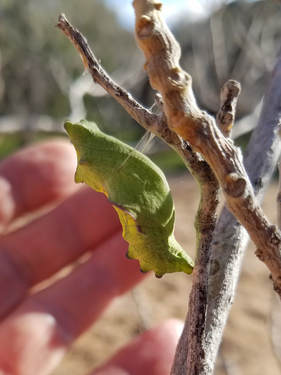PIPEVINE SWALLOWtAIL: Did you know?
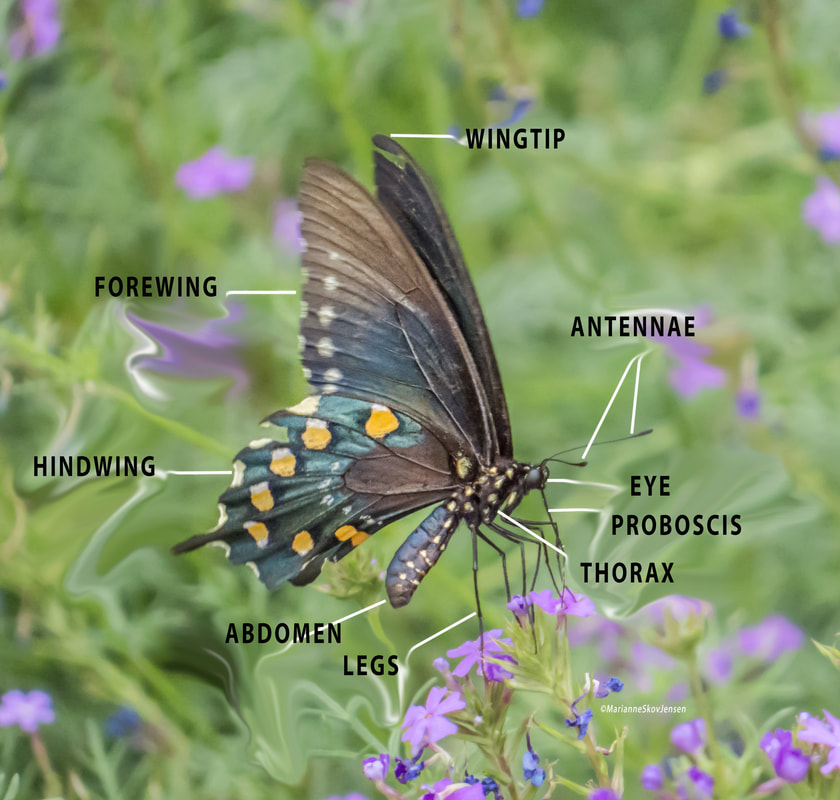
PIPEVINE SWALLOWTAIL
The pipevine swallowtail (Battus philenor) is a large black butterfly measuring 7–10 cm (2.75–4 in) from tip of wing to tip of wing. It is named after the pipevine plant (Aristolochia watsonii). This plant contains acids that are toxic to birds and other animals. The pipevine swallowtail is immune to these toxins and may even absorb some of the toxicity, helping to keep them safe from predators. Image Credit: Marianne S. Jensen What do they look like? The pipevine swallowtail is adorned with iridescent-blue hindwings, making it very easy to see. The underside of the hindwings features one row of seven round orange spots surrounded by the blue field. The forewings are dark brown or black. This coloration is found on both males and females. The upper side of the male's hindwings is iridescent blue, whereas the female's hindwings are paler in color. The bright coloring of the butterfly is a warning to predators. What is their lifecycle? To grow into an adult, butterflies go through four stages: egg, larva, pupa, and adult. This process is known as complete metamorphosis. Each stage has a different goal – for instance, caterpillars need to eat a lot, and adults need to reproduce. In the first stage, pipevine swallowtails lay their tiny bright orange eggs in small clusters on young leaves or stems of pipevine plants. During the second stage, young caterpillars emerge, having a reddish spiny appearance. As they age, the caterpillar appearance changes, with colors appropriate for Halloween – black with orange trim. A caterpillar spends most of its life crawling on and devouring food. But when it's time to become an adult, most caterpillars start to move away from what they've been eating. They find a sheltered, safe spot in which to pupate, or transform into an adult. In all caterpillars, this happens inside a protective shell known as a chrysalis. In this third stage, the chrysalis resembles dried leaves so they are well camouflaged. The chrysalis is either brown and tan or yellow and green, depending on the location they pupate. The chrysalis hangs upside down until the butterfly is ready to emerge as an adult in the fourth and final stage. Click HERE to learn about plants that attract pipevine swallowtails. |
Image Credits: Marianne S. Jensen
What do they eat? Caterpillars (larvae) eat the leaves and seedpods of the pipevine plant. Adult butterflies feed on a variety of plants for their nectar and may also seek out minerals at puddles. They don’t feed on the flowers of the pipevine plant, however, because they are not a good anatomical match for feeding or pollination.
What eats them? The pipevine swallowtail has evolved a survival strategy that makes it distasteful for a predator to eat. It absorbs toxins from its favorite food source, the pipevine plant, which are distasteful and potentially lethal for predators, such as birds. If a predator that has never encountered a pipevine swallowtail before attacks and eats one, it will learn it is not good to eat. After that, when it sees this butterfly, the bright coloration makes it easy for the predator to remember to stay away from this butterfly. This is why its coloration is called a warning coloration.
Where do they live? The pipevine swallowtail is one of the most abundant and conspicuous butterflies of the Sonoran Desert. It can also be found in other areas across the southern United States and southward into Central America.
What do they eat? Caterpillars (larvae) eat the leaves and seedpods of the pipevine plant. Adult butterflies feed on a variety of plants for their nectar and may also seek out minerals at puddles. They don’t feed on the flowers of the pipevine plant, however, because they are not a good anatomical match for feeding or pollination.
What eats them? The pipevine swallowtail has evolved a survival strategy that makes it distasteful for a predator to eat. It absorbs toxins from its favorite food source, the pipevine plant, which are distasteful and potentially lethal for predators, such as birds. If a predator that has never encountered a pipevine swallowtail before attacks and eats one, it will learn it is not good to eat. After that, when it sees this butterfly, the bright coloration makes it easy for the predator to remember to stay away from this butterfly. This is why its coloration is called a warning coloration.
Where do they live? The pipevine swallowtail is one of the most abundant and conspicuous butterflies of the Sonoran Desert. It can also be found in other areas across the southern United States and southward into Central America.
